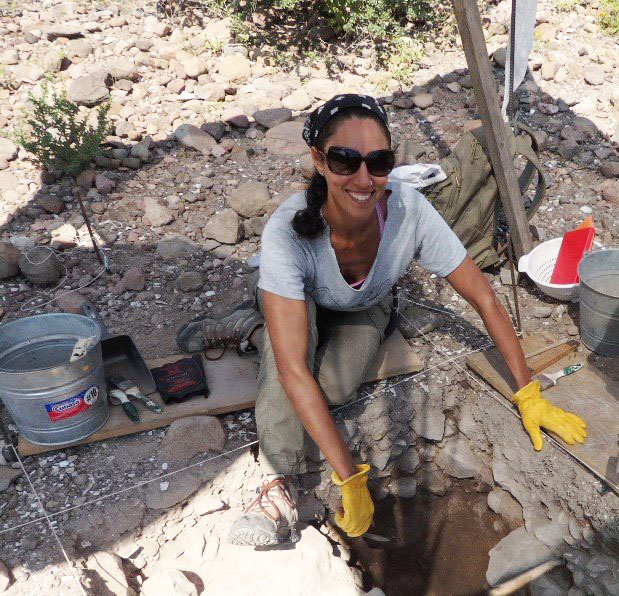I will be joining the Anthropology Department in Fall 2022 as a new faculty member after being an Instructor for the Department since 2016. I completed my Ph.D. at the University of Oregon in 2019 and before that, acquired my M.A. at Cal State LA in 2012, where I was a Sally Casanova Scholar (2010-2011) and the Graduate Student of the Year (2011-2012). I am thrilled to join my alma mater and fulfill the goal of the Sally Casanova Scholarship program - to provide opportunities for Cal State students to pursue doctoral degrees and then return to teach and train the next generation of students at Cal State Universities!
What can we learn from studying piles of old shells and fish bones?
I am an archaeologist interested in better understanding how people in the past lived in and interacted with coastal and island environments in Alta and Baja California. My research themes include the historical ecology of coastlines and islands; the nature and role of foodways in human societies; how people harvested and managed nearshore and littoral resources like seaweeds, marine mammals, fish and shellfish; and using archaeological datasets to reconstruct nearshore paleoenvironments over the past roughly 11,000 years. My research uses several archaeological approaches including zooarchaeology (the study of animal bones and mollusks in archaeological contexts), ethnoarchaeology (reconstructing past lifeways through studies of modern cultures and practices), archaeometry and marine geochemistry (i.e., radiocarbon dating and stable isotope studies), and biological approaches like marine ecology (the study of how marine organisms relate and interact with each other and their environment).
Humans have altered and transformed the places we live for the entirety of our existence. Understanding the choices, impacts, and strategies of people in the past can help us make better choices today as we face numerous ongoing challenges including those of global climate change. My research seeks to assist in this effort by using archaeological data to provide baseline information spanning hundreds or thousands of years for animal populations that have been severely impacted in recent decades.
Fishing is currently a major source of food and primary economic pursuit along the upper Gulf of California, Mexico. Modern fisheries of the upper Gulf were severely impacted by sport and commercial fishing during the 20th century, depleting once abundant stocks and pushing numerous endemic species to near extinction. In addition, anthropogenic impacts in the form of water diversion and damming of the Colorado River have turned the once hyper-productive upper Gulf estuary into a highly saline environment, negatively impacting the spawning cycles of many fish species and further hindering their recovery. Archaeological evidence in the form of fish bones, otoliths, and shellfish show that people have been fishing and collecting shellfish along these coastlines for thousands of years, providing a wealth of baseline data and important historical context for modern fisheries. For example, our recent analysis of archaeological otoliths of Totoaba macdonaldii, which is currently Red List Endangered, reveals that people have been harvesting this huge fish (up to 2 meters in length and 200 pounds) for at least 6,000 years. In our study, morphometric measurements of otoliths, radiocarbon dating, and stable isotope analysis was used to describe the demographics of harvested populations, seasonality of fishing, and reconstruct aspects of the upper Gulf paleoenvironment during the past several thousand years (1).
Similarly, we used detailed analyses of small gastropod shells and sea urchin remains from archaeological shell middens on California’s Channel Islands to suggest the harvesting of seaweeds, seagrasses, and kelps in the past and reconstruct aspects of the vital kelp forest ecosystems that surround these islands and sustained Native Islanders, including Island Chumash, Nicoleño, and Gabrieleño populations for thousands of years (2, 3, and 4).
The study of archaeological mollusks can also be used to demonstrate a deep history of cultural continuity and resilience of cultural practices. For example, ethnohistoric accounts of the Pericu people, who inhabited the southern part of the Baja California peninsula for at least thousands of years, describe the use of grooved pearls in various forms of jewelry and as hair ornaments. Our study of grooved pearls from an archaeological site in the region demonstrated that this practice was far older than at first assumed and extended back to at least 8,500 years ago, being the oldest known evidence for human modification of pearls in the world (5).
